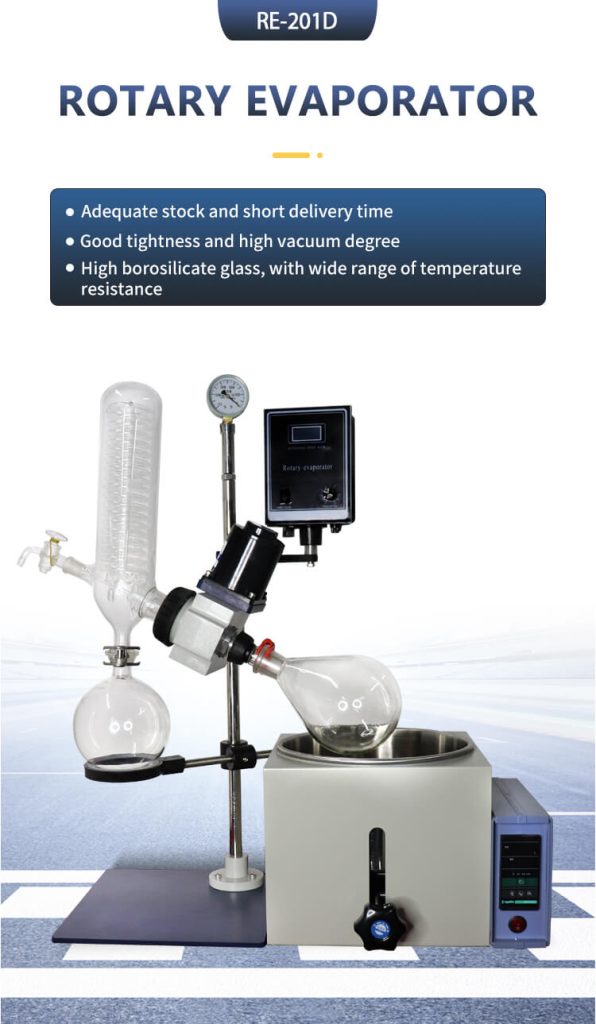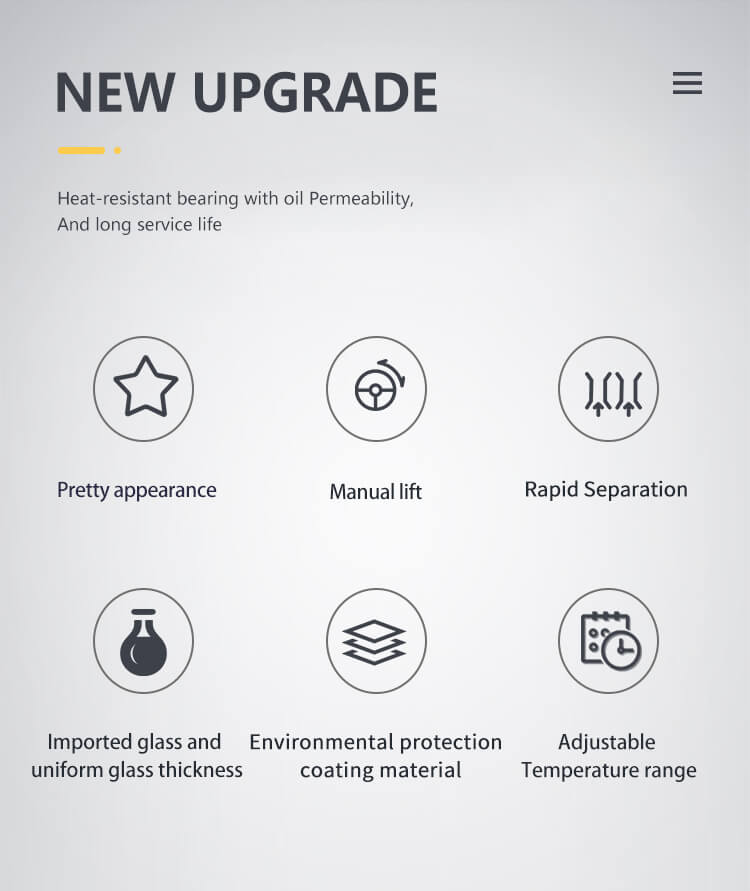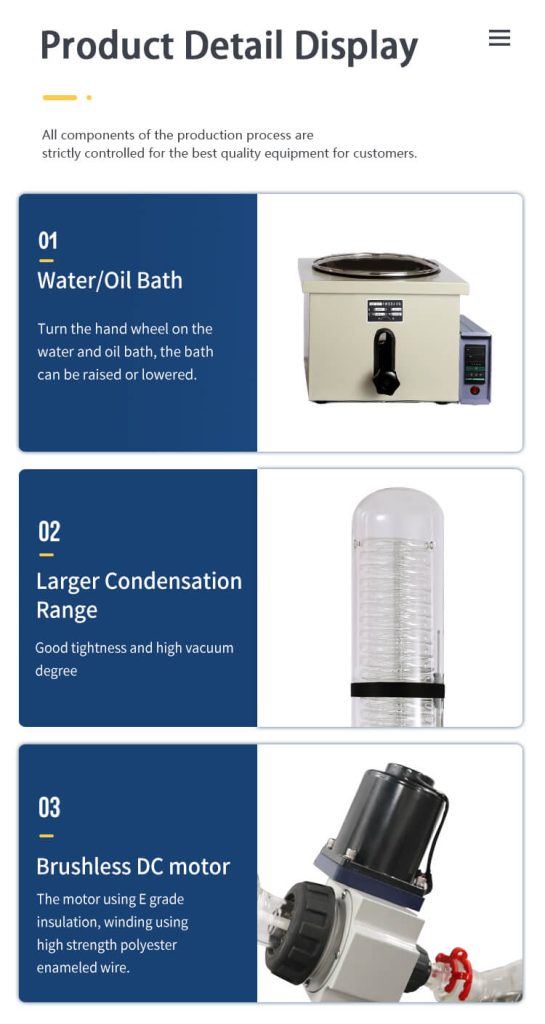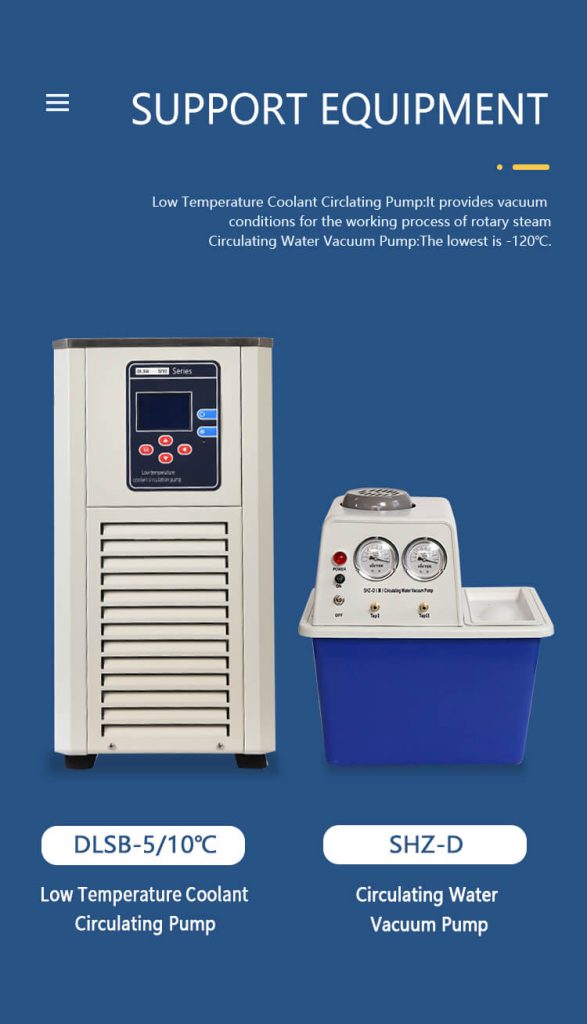In the realm of modern science, laboratory equipment plays a pivotal role in advancing research and education. Among the myriad of tools available, the educational rotary evaporator stands out as a critical device for solvent removal in various scientific applications. This article aims to delve into the functionality, applications, and significance of the educational rotary evaporator in laboratories. Moreover, we will explore a real-world case study that highlights the practical use of this versatile instrument.
A Comprehensive Insight into the Educational Rotary Evaporator
In this section, we will provide a thorough understanding of the educational rotary evaporator – an indispensable laboratory instrument. The educational rotary evaporator consists of various essential components that work harmoniously to facilitate efficient solvent removal. These components include the evaporating flask, condenser, vacuum system, and rotating motor, each playing a crucial role in the overall functionality of the device.
The core principle behind the educational rotary evaporator lies in the process of solvent evaporation. By controlling temperature and pressure, scientists can efficiently separate solvents from the desired substances, ensuring purity and concentration. The evaporating flask houses the sample solution, which is then gently heated, while the condenser cools the evaporated vapors back into liquid form, ready for collection. The vacuum system aids in lowering the pressure within the system, further promoting the evaporation process.
Understanding the educational rotary evaporator’s structure and operation is paramount for laboratory personnel and students alike. Proficient knowledge of the equipment enables users to optimize its performance and ensure precise results in various scientific applications. Moreover, comprehending the significance of temperature and pressure control allows for safe and effective solvent removal, making the educational rotary evaporator a reliable tool for researchers and learners in academic settings.

The Diverse Applications of the Educational Rotary Evaporator in Academic Environments
In the realm of academic laboratories, the educational rotary evaporator finds itself as an invaluable and versatile instrument, catering to a myriad of scientific applications. With its ability to efficiently remove solvents, this device becomes an indispensable tool for students and researchers across various disciplines.
An area where the educational rotary evaporator excels is chemistry due to its exceptional capabilities. Chemistry students utilize this equipment to distill and purify solvents, allowing them to deepen their understanding of essential chemical processes. By engaging in hands-on experimentation with the rotary evaporator, students gain practical insights into the principles of separation and purification techniques, crucial skills in the world of chemistry.
In pharmaceutical laboratories, the device plays a pivotal role in drug research and development. Here, the rotary evaporator aids in the concentration of drug solutions, isolating active pharmaceutical compounds from natural sources or synthesized materials. Such extraction and purification processes are vital steps in pharmaceutical research, where even minute quantities of these compounds hold immense significance.
Biological sciences also benefit from the educational rotary evaporator’s applications. Biology students can use the device to concentrate plant extracts and separate complex mixtures of biomolecules. This allows for the isolation of specific compounds, such as proteins or enzymes, which can then be subjected to further analysis and research.
Moreover, the educational rotary evaporator is instrumental in environmental research, where it aids in the analysis of soil and water samples. By removing solvents from the environmental samples, scientists can concentrate the target substances for analysis, thereby improving detection limits and precision.
In conclusion, the educational rotary evaporator catering to diverse applications in chemistry, pharmaceuticals, biology, environmental research, and even culinary arts. By providing hands-on experience and practical insights, this instrument empowers students and researchers to push the boundaries of scientific exploration and discovery.

Case : The Educational Rotary Evaporator’s Role in Advancing Natural Product Research
We will delve into a real-world case that exemplifies the significant impact of the educational rotary evaporator in enhancing natural product research. The case focuses on a group of aspiring pharmacologists who sought to isolate bioactive compounds from a rare medicinal plant.
The research team began by extracting various plant components using a suitable solvent. Once the extraction process was complete, they were left with a complex mixture containing the desired bioactive compounds along with other plant constituents. To isolate and concentrate the target compounds efficiently, the team turned to the educational rotary evaporator.

Employing the rotary evaporator, the researchers carefully placed the plant extract into the evaporating flask and initiated the evaporation process. By controlling the temperature and pressure, they facilitated the separation of the solvent from the mixture, leaving behind a concentrated solution enriched with the bioactive compounds. This solvent removal process not only increased the purity of the isolated compounds but also enabled a higher concentration, making them more readily available for further analysis.
The team then subjected the concentrated solution to various tests, including chromatographic techniques and spectroscopic analysis. These experiments confirmed the presence of potent bioactive compounds with promising medicinal properties. The successful isolation and purification of these compounds laid the foundation for in-depth pharmacological studies, evaluating their potential therapeutic applications.
In conclusion, the educational rotary evaporator serves as an indispensable asset in natural product research, enabling scientists to extract, isolate, and concentrate bioactive compounds from complex mixtures. The case exemplifies how this device enhances the understanding of medicinal plants’ therapeutic potential and sets the stage for groundbreaking discoveries in the realm of pharmaceuticals and healthcare.
The Benefits and Boundaries of the Educational Rotary Evaporator
As with any scientific instrument, the educational rotary evaporator offers distinct advantages and limitations that researchers and students should consider in their laboratory work.
Advantages:
1. Compact Size: The educational rotary evaporator boasts a relatively small footprint, making it suitable for laboratories with limited space. Its compact design ensures efficient utilization of available resources.
2. Ease of Use: This instrument is designed with user-friendliness in mind, allowing students and researchers to operate it without extensive training. Its intuitive interface simplifies the solvent removal process.
3. Cost-Effectiveness: Compared to larger, more complex evaporators, the educational rotary evaporator is a cost-effective option for academic institutions and research facilities with budget constraints.
4. Enhanced Purity: By effectively removing solvents from mixtures, the rotary evaporator aids in producing purified compounds with higher concentrations, vital in scientific research and analysis.
5. Versatility: The device’s adaptability enables it to be employed in various scientific disciplines, ranging from chemistry and biology to pharmaceutical research and environmental studies.

Limitations:
1. Maintenance Requirements: Like all laboratory equipment, the educational rotary evaporator demands regular maintenance to ensure optimal performance. This involves cleaning and inspecting crucial components to prevent potential malfunctions.
2. Volatile Solvents: Handling volatile solvents can pose challenges in terms of safety and accuracy. Users must exercise caution and adhere to appropriate safety protocols when dealing with such substances.
3. Throughput Limitations: The educational rotary evaporator might not be suitable for high-throughput operations due to its smaller capacity and slower processing speeds.
4. Limited Applications: While versatile, the device might not be suitable for certain specialized applications that require specific features or capabilities present in more advanced evaporators.
By understanding these advantages and limitations, laboratory personnel and students can make informed decisions regarding the application of the educational rotary evaporator in their scientific experiments. Proper utilization of this instrument can maximize its benefits while mitigating potential challenges, ultimately contributing to more efficient and productive research endeavors.
Best Practices for Safe and Efficient Operation
Operating the educational rotary evaporator requires adherence to best practices to ensure both safety and efficiency in the laboratory setting. By following these guidelines, users can optimize the performance of the instrument and minimize the risk of accidents or mishaps.
1. Proper Setup: Before use, carefully assemble the components of the rotary evaporator, ensuring a secure connection between the evaporating flask, condenser, and vacuum system. Check for any leaks or loose fittings that could compromise the integrity of the system.
2. Suitable Solvents: Choose solvents appropriate for the intended application and compatible with the equipment. Be aware of the solvent’s volatility to prevent any potential hazards during the evaporation process.
3. Vacuum Control: Maintain a stable and controlled vacuum level throughout the operation. Proper vacuum management is crucial for efficient solvent removal and the prevention of sample contamination.
4. Temperature Regulation: Set and monitor the evaporating flask’s temperature accurately. Controlling the temperature ensures that the solvent evaporates at the desired rate without overheating or damaging the sample.
5. Regular Maintenance: Perform routine maintenance on the rotary evaporator, including cleaning the condenser, inspecting seals, and lubricating moving parts. Regular maintenance prolongs the instrument’s lifespan and ensures consistent performance.
6. Personal Protective Equipment (PPE): Always wear appropriate PPE, such as lab coats, gloves, and safety goggles, when operating the rotary evaporator. PPE safeguards users from potential chemical splashes and exposure.
7. Supervision and Training: Ensure that only trained personnel, such as students under the guidance of experienced instructors, operate the educational rotary evaporator. Proper training minimizes the likelihood of accidents and ensures proficient use of the equipment.

By adhering to these best practices, laboratory users can operate the educational rotary evaporator with confidence, achieving optimal results while upholding a safe working environment.
The Future of Educational Rotary Evaporators: Advancements and Innovations
The educational rotary evaporator, already a vital instrument in laboratories, holds promising prospects for further advancements and innovations. As technology continues to evolve, researchers and manufacturers are exploring ways to enhance the device’s capabilities, making it even more efficient and environmentally friendly.
One area of focus for future development is energy efficiency. Efforts are underway to design rotary evaporators that consume less power while maintaining high-performance standards. These advancements aim to reduce the instrument’s environmental footprint, aligning with the growing global emphasis on sustainability in scientific practices.
Additionally, there is a growing interest in integrating automation and digitalization into rotary evaporators. Automation features would streamline processes, allowing for greater precision and reproducibility in solvent removal. Furthermore, the integration of digital interfaces and data recording capabilities could facilitate real-time monitoring of experiments, providing researchers with valuable insights and enhancing the educational experience.
Another aspect of future development is the exploration of alternative materials and manufacturing methods. Researchers are investigating new materials that exhibit superior chemical resistance and durability, ensuring the longevity of the instrument and reducing the need for frequent replacements or maintenance.
Furthermore, advancements in safety features are a top priority. Innovations may include automated safety shutdown protocols to prevent accidents in case of pressure fluctuations or system malfunctions.
As these advancements take shape, the educational rotary evaporator will continue to play a crucial role in nurturing the next generation of scientists. By introducing students to state-of-the-art technologies and sustainable practices, these devices inspire curiosity and creativity, paving the way for groundbreaking discoveries and solutions to complex scientific challenges.
As the field of scientific instrumentation progresses, the educational rotary evaporator will remain at the forefront of empowering learners and facilitating groundbreaking discoveries in academic and research environments.

Conclusion
In conclusion, the educational rotary evaporator stands as an indispensable tool for solvent removal and concentration in laboratories. Its versatility, ease of use, and practical applications make it an invaluable asset for students and researchers alike. By understanding its functionality and best practices, users can harness the full potential of this equipment while ensuring safety and efficiency in their experiments. As advancements continue to propel scientific instrumentation forward, the educational rotary evaporator will remain at the forefront of laboratory innovations, empowering the next generation of scientists to make groundbreaking discoveries.
